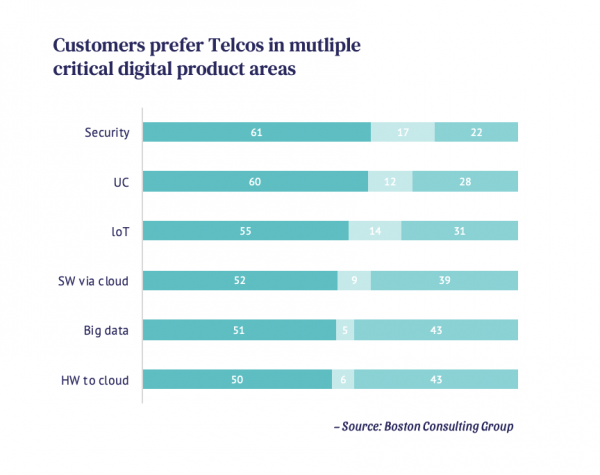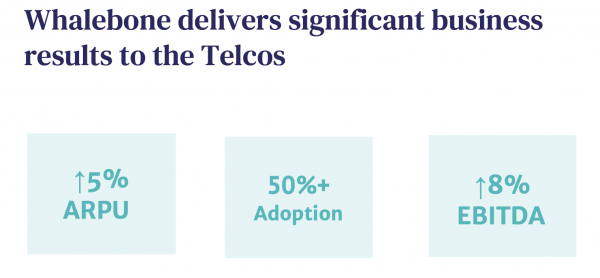Let’s face it, the age of telecommunications has long been a double edged sword. On one hand, accessing the internet via smartphone or fully connected home, with the help of your telco and its network, puts the world and your products and services in the hands of countless users, i.e. your valued customers. On the other hand, using these vast networks presents whole new opportunities for criminal malfeasance, and this new, mobile centric world comes with a constantly evolving threat scape. As fast as the benefits of connectivity technology evolve, shining a light on new business opportunities, so do the very real and costly dark sides.
A world (of threats) in the palm of your hand?
Let’s start with the big picture, how much harm is really caused by these alleged threats? Jupiter Research put the cost of cybercrime at a whopping $2 trillion in 2019. Forbes goes even higher, putting the cost to companies and individuals at some $6 trillion annually. For perspective, that’s “much more in damages and cost than all natural disasters in a year,” writes Forbes. The massive fires in Australia, hurricanes, floods, windstorms, volcanos and the like all pale in comparison when it comes to the economic downside of the damage done by online criminals.Now think about the current 5.11 billion internet users and you can begin to get a feel for why connectivity security is topping everyone’s worry lists in 2020. We’re all connected to the internet. Is it time to board up the windows or can we still let the sun shine in?With all that sensitive data flying about, getting it to the right place and keeping it out of the wrong hands is a major concern. From the business perspective, the average cost of a corporate data breach, according to a report by the Ponemon Institute, was $3.86 million in 2018, up 6.4% year-on-year and set to climb. With 1,473 major data breaches reported in 2019, you can start to get a feel for the scope of the problem.And that’s just on the corporate side, the damage to your customers is almost unfathomable. In 2019 alone, according to Statistica, over 164.68 million consumers had their sensitive data, everything from passwords to personal data to account information, exposed. This is a clear indicator that protecting an operator’s customers, its B2C clientele, is equally as mission critical as protecting its B2B business.Cybercrime is now the single greatest transfer of economic wealth in human history and “more profitable than the trade in all the world’s illegal drugs combined,” according to Cybercrime Magazine.To put it bluntly, the down side of the double edged sword can cut awful deep… and it hurts.

The true window of opportunity
While telcos are faced with a myriad of choices when it comes to ways to generate revenue, from content to music streaming, to cloud services to smart home gadgets, to name just a few, it can be hard to tell which window to open, when. Customer satisfaction equals brand loyalty and reputation, but in the hyper competitive telco business, knowing how to increase that satisfaction while generating a timely ROI is the devil in the details.But every now and again there’s an easy win. That’s where Whalebone comes in. Providing effective B2C and B2B security can be a game changer in terms of customer satisfaction, brand loyalty, revenue generation and time to market. So while the threats are real and growing, so too are the solutions that allow the sun to keep on shining. According to Whalebone CEO Richard Malovič, “there is no silver bullet in security, but people can and will be protected.”
Protecting 1 billion mobile users by 2025
Fortunately for telcos, problems beget solutions. When it comes to telecommunications security, the problem has been the fact that there are significant impediments to tapping the market. These include the time it takes to introduce a new security product to market, which can take years, the question of whether end users will actually go through the process of setting up such product on their devices, and finally, whether they are willing to pay for it, i.e. having an effective business case that makes it all worthwhile. The fact is users want security, explained Mr. Malovič, and the numbers clearly show it. What they don’t want is disruption. This means that operators need a product that doesn’t disrupt the user experience, is time sensitive in terms of roll out, and economically viable, i.e. that users will pay for. Whalebone has made it their mission to remove the impediments to effective security with the goal of protecting 1 billion users by 2025, while opening the floodgates of B2C and B2B revenue flow for the world’s telcos and cutting traditional time to market. Their number one goal has been to protect customers en masse, i.e. by the millions, because connected means protected. This meant analysing threat intelligence and information about attacks, scouring the vast amounts of data that simply weren’t being used for this purpose, and building neural networks to further complement and drive in-house threat intelligence to let the sun shine in and keep threats out.At the same time they understand it’s mission critical to make the user experience as easy and seamless as possible, i.e. to boldly go where so many have failed before. The answer was to create a solution that resides on the telcos’ network at the DNS level, so that there was nothing for end users to install. It’s as easy as saying OK at the shop or via call assistance for customers to get instant threat protection up and running. Branded as the operator chooses, Whalebone provides users with easy to access information on threats and how they have been resolved, at once allowing the user to see the security actions taking place, i.e. that they are being protected, while at the same time requiring them to effectively do nothing (no disruption). By combining the concepts “seeing is believing”, with “no disruption” and “out of sight but not out of mind”, Whalebone has set a new standard for the B2C and B2B security experience.Customers would know they are being protected but not being bothered. Operators would have complete control via a simple live interface, on site or on the cloud to monitor what comes across their networks long before it is too late and the damage done. Finally, and perhaps the most pertinent challenge in the ever changing threat scape, operators needed to be able to deliver this to their users… yesterday. The fastest possible time to market was mission critical, so Whalebone reduced roll out times to the absolute minimum (1-3 months maximum), meaning that operators could be offering enhanced security to their customers, en masse, in no time. To top it all off, the underlying business case is air tight. Not only are customers offered state-of-the-art non-obtrusive security that resides on the network level, i.e there is nothing for users to install, 40-60% of all network users opt in straight away, with a simple yes. Experience has shown that users are happy to pay 1-2 EUR per month for the enhanced protection service (as compared to single digit percentage opt in rates for old protections, such as device based anti-virus software) and end up more satisfied as a result, increasing customer loyalty and driving additional revenue for high penetration telco operators.

Conclusion
So, as Whalebone likes to say “connected means protected”. Smooth deployment, the fastest time to market around, no disruption of the internet user experience, no software for users to install, full functionality including, off-net protection, parental & content control, MSSP, enterprise security or infrastructure DNS & security, and a 5% ARPU with nearly 50% adoption rates all mean that Whalebone has rolled out the right product at the right time. So, while the age of telecommunications may be a double edged sword, staying on the right side of the blade and letting the sunshine through this window of opportunity is easy with Whalebone. Call for your free consultation today to learn more about how Whalebone is right for you.



